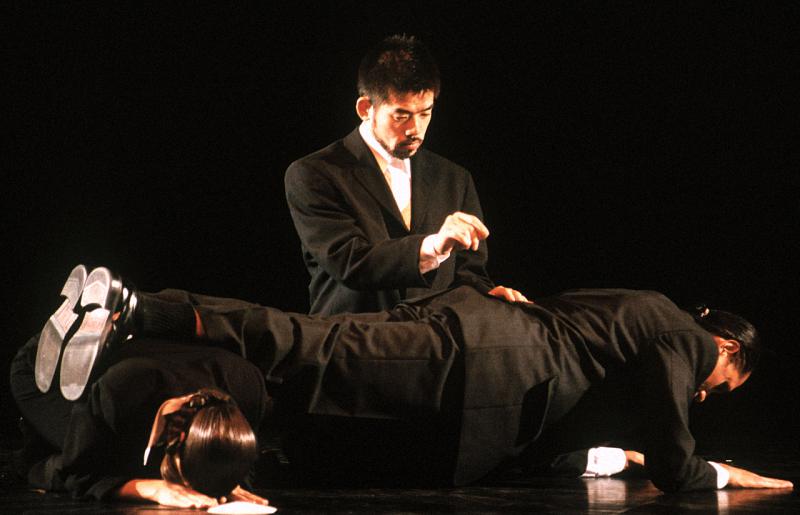“Modul|a|t|o|r – Le Corbusier” was the title for our creation in the year 2002.
The “Modulor” is a measuring tool which is based on the fusion of the human form with mathematics. The human figure with a raised arm creates, at the main junctures of spatial displacement, these being the foot, solar plexus, head and the fingertips of the raised arm, three intervals, which result in a series of golden sections. These are named after Fibonacci. In addition, the science of mathematics offers both the simplest as well the most distinctive possibilities of variation within any given value: the unity, the duality, both the golden sections.
This formal system, based on human proportions, as was demonstrated centuries ago in the work of Vituvius and Leonardo da Vinci, acts as both the formula and the generator for danced modules. These result, in interaction with a camera tracking system, as well as a microphone and a camera, in a multimedia project with the human body as its subject matter.
Since it is not tied by any particular text or dramatic context, this system is able to create a free basis, using both the sound material provided by the body itself (voice, breath, floor noises) as well as visual sequences of the moving body using videosampling. In this way a sequence of single modules for one to four dancers and two actors will be created. These provide sound and image, as well as acting as modulators for their own material, as movement is translated into data.
The whole piece was an extensive scenic collage about the questioned theories by Le Corbusier. The interactive, dancer’s broads scenes went out first from the self-sedate basis:
As long as no one will enter the stage area the stage is dead (no picture. no sound). If a person enters this sensorised scenic space, a visual videoscenery (Szenography) and sound originates from the presence of a moving person within that stage-space.
After the performance series we filmed four theatrical sequences from “Modul|a|t|o|r” as short films. The interactively, intermedia Dance-Soli were a starting point for the following further development in the research project “PCI-Performer computer interaction” which was follwoed in 2005 by the piece “HOEReographien“.
